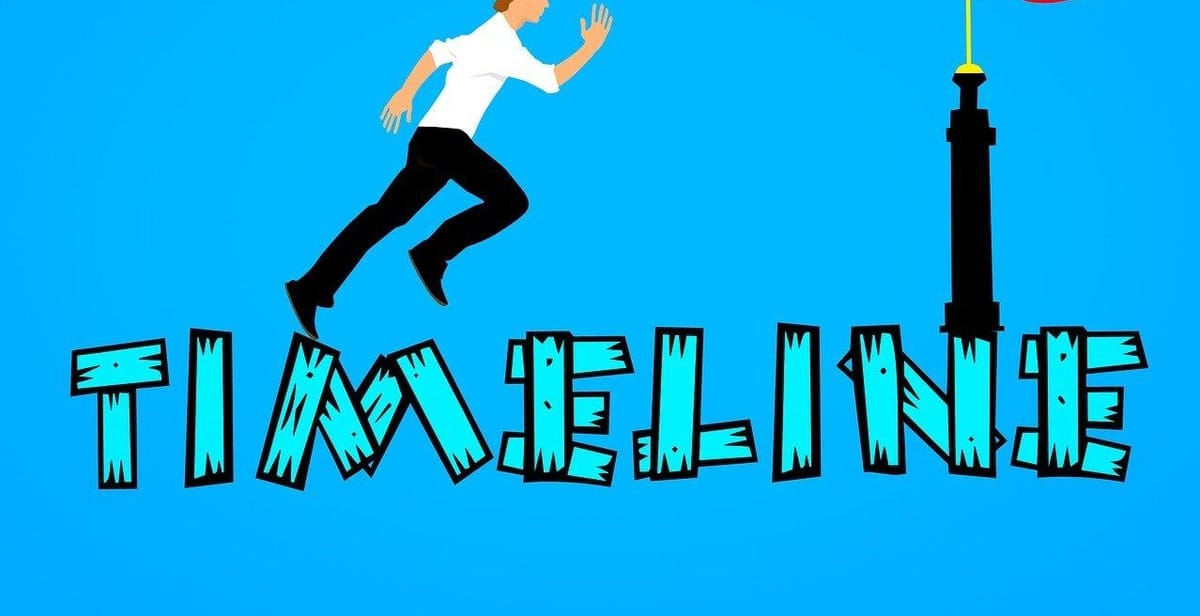When should I stop a project that doesn’t reach my expectations?
Defining project expectations is the cornerstone of any successful project. Setting clear and realistic goals is essential to ensure that the project is delivered on time, within budget, and to the satisfaction of the stakeholders. However, even with the best-laid plans, projects can sometimes fall short of expectations, leaving project managers wondering whether to continue or cut their losses.
Knowing when to stop a project that’s not meeting expectations can be a difficult decision. On the one hand, stopping a project can save time and resources that could be better spent on more fruitful endeavors. On the other hand, giving up too soon can be a missed opportunity to salvage the project and deliver value to stakeholders.
In this article, we’ll explore the factors that project managers should consider when deciding whether to continue or stop a project that’s not meeting expectations. We’ll look at the warning signs that indicate a project may be in trouble, the steps project managers can take to assess the situation, and the criteria that should guide their decision-making process.
When to Reconsider a Project
Every project has its own set of goals and expectations. However, there are times when a project does not meet these expectations, and it becomes necessary to reassess whether it is worth continuing. Here are some signs to watch out for:
Signs That a Project is Not Meeting Expectations
1. The project is not progressing as planned. Despite your best efforts, the project is not moving forward as expected.
2. The project is over budget. You are spending more money than you anticipated, and the project is not delivering the expected results.
3. The project is taking too long. The timeline for the project has been extended, and it is taking longer than expected to complete.
4. The project is not meeting quality standards. The end product is not meeting the quality standards that were established at the beginning of the project.
5. The project is not meeting stakeholder expectations. The stakeholders are not satisfied with the project’s progress or outcome.
When the Project is No Longer Viable
There are times when a project is no longer viable, and it is necessary to consider stopping it altogether. Here are some situations where this may be the case:
| Situation | Description |
|---|---|
| Change in requirements | The project requirements have changed significantly, and it is no longer feasible to continue with the current plan. |
| Lack of resources | The project requires resources that are not available, and it is not possible to acquire them. |
| Legal or regulatory issues | Legal or regulatory issues have arisen that make it impossible to continue with the project. |
| Market conditions | The market conditions have changed, and it is no longer profitable to continue with the project. |
When any of these situations arise, it is important to reassess the project and determine whether it is still worth pursuing. Continuing with a project that is no longer viable can waste resources and lead to further disappointment.
Assessing the Project
When a project fails to meet expectations, it is essential to assess the situation carefully. The assessment process should focus on analyzing the reasons for the failure and considering the impact on stakeholders.
Analyzing the Reasons for Failure
One of the first steps in assessing a failed project is to analyze the reasons for the failure. This analysis should be thorough and objective, with a focus on identifying the root causes of the project’s shortcomings. Common reasons for project failure include:
- Poor planning and execution
- Inadequate resources or budget
- Lack of communication and collaboration
- Unrealistic expectations or goals
- External factors such as market conditions or regulatory changes
It is crucial to identify the specific reasons for the failure to avoid making the same mistakes in future projects. This analysis should involve all stakeholders, including project team members, sponsors, and clients.
Considering the Impact on Stakeholders
Another critical aspect of assessing a failed project is considering the impact on stakeholders. This includes both internal and external stakeholders, such as team members, clients, investors, and the broader community.
It is essential to understand how the failure will affect each stakeholder group and to develop a plan to mitigate any negative impacts. This may involve communicating openly and transparently with stakeholders, offering compensation or other forms of support, or developing a new project plan to address their needs.
| Stakeholder Group | Potential Impact | Mitigation Strategy |
|---|---|---|
| Project Team | Disappointment, demotivation, job insecurity | Offer support and training, involve them in the assessment process, provide clear feedback and expectations for future projects |
| Clients | Loss of trust, reputation damage, financial losses | Communicate openly and transparently about the reasons for the failure, offer compensation or other forms of support, develop a new project plan to address their needs |
| Investors | Financial losses, reduced confidence in future projects | Communicate openly and transparently about the reasons for the failure, offer compensation or other forms of support, develop a new project plan to address their needs |
By carefully assessing the reasons for the failure and considering the impact on stakeholders, it is possible to learn from mistakes and develop a plan for future success.

Making the Decision to Stop the Project
When a project is not meeting expectations, it can be difficult to determine whether to continue or stop. However, continuing with a failing project can be more costly than stopping it. Therefore, it is important to weigh the costs and benefits of continuing the project or stopping it.
Weighing the Costs and Benefits
One way to determine whether to stop a project is to weigh the costs and benefits. This involves analyzing the resources, time, and money that have been invested in the project, as well as the potential benefits that the project can bring. If the costs outweigh the benefits, it may be time to consider stopping the project.
It is important to note that stopping a project does not necessarily mean that it has failed. Sometimes, stopping a project can be the best decision for the organization, especially if it allows resources to be redirected towards more promising projects.
Consulting with Stakeholders
Another important factor to consider when deciding whether to stop a project is the input of stakeholders. This includes team members, project sponsors, and clients. Consulting with stakeholders can provide valuable insight into the progress and potential success of the project.
Stakeholders can also provide feedback on the impact that stopping the project would have on the organization and its goals. This feedback can help decision-makers make an informed decision about whether to continue or stop the project.
Overall, making the decision to stop a project can be a difficult one, but it is important to consider the costs and benefits and consult with stakeholders before making a final decision.

Steps to Take When Ending a Project
When you decide to end a project that doesn’t meet your expectations, it’s important to communicate the decision and develop an exit strategy. The following steps will help you handle the situation professionally:
1. Communicating the Decision
The first step in ending a project is to communicate the decision to all stakeholders involved. This includes your team members, clients, vendors, and any other parties who may be affected by the project’s termination. It’s essential to be clear and honest about the reasons behind the decision and the impact it will have on everyone involved.
It’s also important to be empathetic and understanding of any concerns or questions that stakeholders may have. Addressing these concerns and answering any questions will help to ease the transition and maintain positive relationships with everyone involved.
2. Developing an Exit Strategy
Once you’ve communicated the decision to end the project, the next step is to develop an exit strategy. This involves creating a plan for wrapping up all of the project’s loose ends, such as completing outstanding tasks, settling any financial obligations, and transferring any necessary information or assets to other parties.
Your exit strategy should also include a plan for communicating the project’s termination to external parties, such as customers or clients. This communication should be clear and concise, and it should provide any necessary information about next steps or alternative solutions.
To ensure a smooth transition, it’s also important to involve all stakeholders in the development of the exit strategy. This will help to ensure that everyone is on the same page and that everyone’s needs and concerns are addressed.
Conclusion
By following these steps, you can end a project that doesn’t meet your expectations in a professional and respectful manner. Communicating the decision and developing an exit strategy will help to minimize any negative impacts and maintain positive relationships with all stakeholders involved.

Conclusion
Deciding when to stop a project can be a difficult and emotional decision, especially when you have invested a lot of time, effort, and resources into it. However, sometimes it’s necessary to cut your losses and move on to other projects that have better potential for success.
Before making a decision to stop a project, it’s important to assess the situation objectively and take into account factors such as the project’s goals, timeline, budget, and resources. If the project is not meeting your expectations despite your best efforts, it may be time to reassess your goals and make a strategic decision to pivot or abandon the project altogether.
It’s important to remember that failure is not always a bad thing. Sometimes, it can be an opportunity to learn, grow, and come up with new and better ideas. By recognizing when a project is not working out and making the tough decision to stop it, you can free up resources and energy to focus on more promising opportunities.
Ultimately, the decision to stop a project should be based on a careful analysis of the situation and a realistic assessment of the project’s potential for success. With the right mindset and approach, you can turn a difficult decision into a positive step forward in your career or business.
